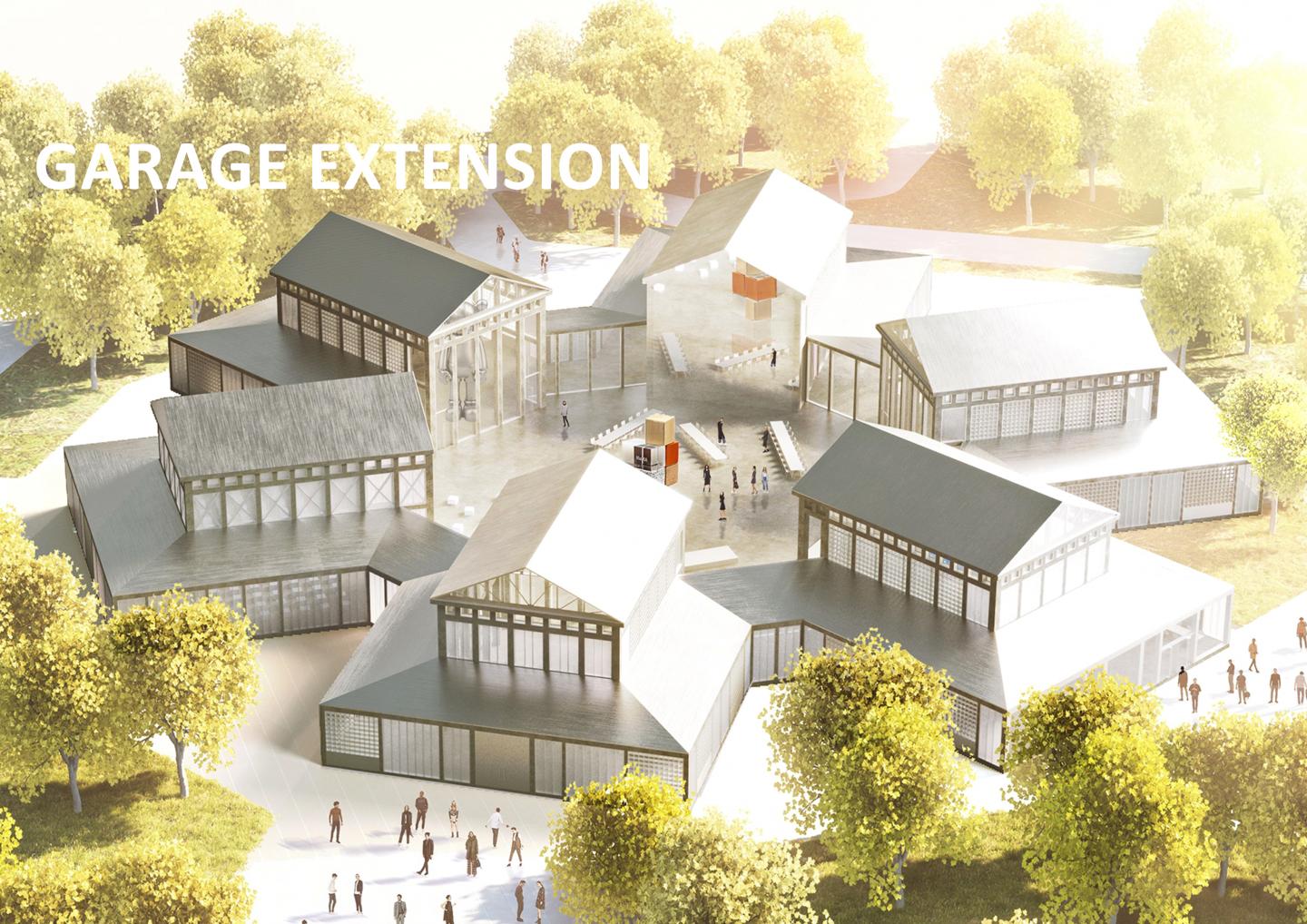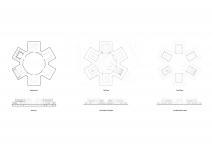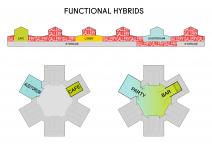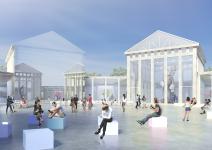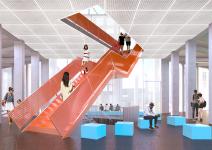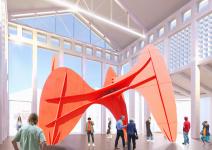The Hexagon Pavilion is a famous project by the Soviet architect Ivan Zholtovsky, created for the 1923 All-Russian Agricultural and Artisanal-Industrial Exhibition in Gorky Park. Over the years the pavilion has changed its purpose several times: it was used as an exhibition space, as a dance floor, and even as a canteen. The pavilion suffered twice from fires, in the 1970s and 1980s, and after the last destruction it remains abandoned until today. In the 2010s it was purchased by the Roman Abramovich Contemporary Art Organization.
The main concept of the project is based on the integration of modern architecture into the ruins of the pavilion. The inclusion of polycarbonate panels and metal frames with glazing in the preserved structure of the pavilion creates a dialogue with the original wooden imposts and walls, while at the same time not being a literal interpretation. The new parts of the building simultaneously resemble and confront the original appearance.
Throughout its rich history, the pavilion has undergone various functional transformations, which serves as the concept for new functional programming. The project includes not only exhibition spaces in all segments of the pavilion, but also additional spaces such as a café, an auditorium, and a large recreational space in the lobby. Along with an open courtyard each of these components can be used independently, but openings between them make it possible to use the building as a single entity mixing programs and generating hybrids. Such special logic allows adjustment to particular needs and events, creating Garage Extension as a flexible art platform.
2021
The pavilion is made of reinforced concrete, steel and polycarbonate sheets.
Designers: Gamid Isaev , Bashkirov Artem , Vladislav Dudyrev
Supervisor or Instructor: Elena Ermolenko
